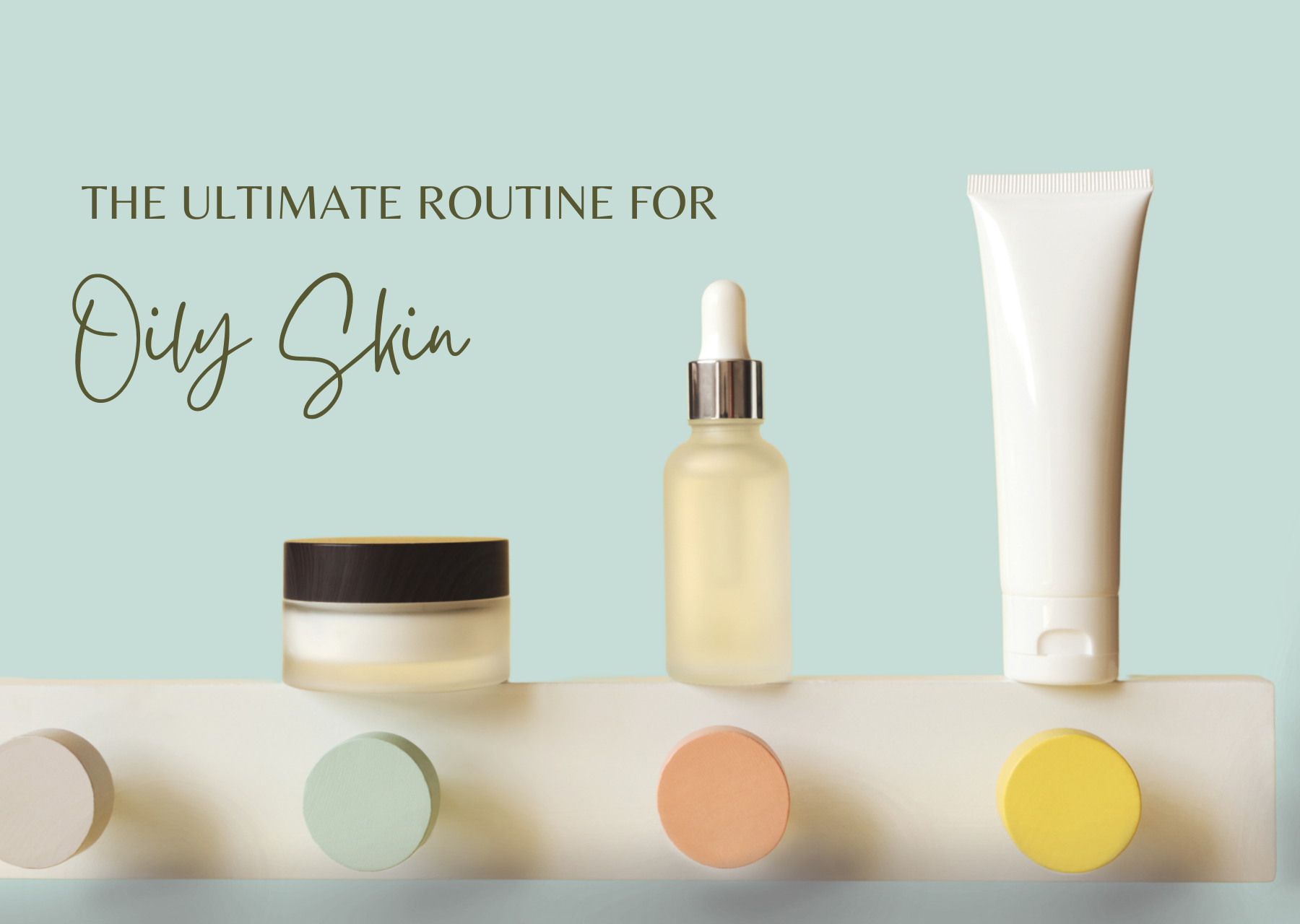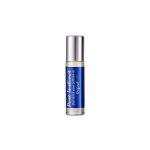No products in the cart

Skincare Routine for Oily Skin
So, where were we?
The last time we talked about oily skin type, we shared its characteristics, and the general do’s and don’ts. Today, we’ll dive in a little deeper, down to every step of your daily skincare routine if you have oily skin!
Before we start, you have to get ready to make a commitment to a skincare routine and make it a part of your lifestyle, because if you’re going to get lazy and skip a day or two, then don’t bother at all!
No matter how busy your schedule is, never leave your skin crying for attention when you can nurture it by following a few simple steps and tips. The main reason behind having a fixed skincare routine for oily skin is to help clear clogged pores, reduce sebum production, get rid of blackheads and whiteheads, and prevent acne.
It’s a quick process that consists of two parts, one in the a.m and another in the p.m that will take nothing of your time. Let’s mention the steps in the right order first then we’ll describe what each product does to your skin
So, are you down with us? Cool, let’s get started
- In the morning:
Cleanser (Daily)
Toner (Daily)
Serum (Daily)
Moisturizer (Daily)
Eye cream (Daily)
Primer (Daily)
Face oil (Daily)
SPF (Daily)
- In the evening:
Make up remover (If you’re using a single cleanser but in case of double cleansing you can skip this step)
Cleanser (Daily)
Exfoliator (Once a week)
Toner (Daily)
Moisturizer (Daily)
Sheet mask (Every two days)
Serums (Daily)
Spot treatments (On a case by case basis)
Eye cream (Daily)
Face oil (Daily)
- CLEANSER
After removing all of your make- up, kick off your skincare routine by washing your face with a good cleanser, this will help your skin get rid of all that excess oil, dirt, dead skin cells and make-up leftovers, leaving it refreshed and prepped for the next steps of your skincare routine.
Try to use a gel cleanser that contains Glycolic Acid because it goes deep into the skin and it fights acne and reduces breakouts. Or you could try using Niacinamide because it regulates sebum production and protects the lipid barrier.
- TONER
Finished cleansing? Great! Now pick up your toner, soak a cotton pad with it, and then move it over the whole face. This will exfoliate the skin, shrink and clear out clogged pores, and reduce oil production. It will also normalize your skin’s pH level, leaving your skin soft and clean.
Let’s try using salicylic acid because it penetrates deep into the skin and regulates sebum production and unclog pores and fights against blackheads and whiteheads.
- SERUM
using your fingertips, spread the serum all over the face. Using the right serum will nourish, protect, and hydrate your skin. It will also improve the appearance of fine lines and wrinkles and protect your skin from future damage.
Get a serum that contains Glycolic acid; it reduces breakouts and fights acne and removes dead skin cells while accelerating cell renewal. On the other hand, Lactic acid Treats hyperpigmentations and age spots and has anti-aging properties.
- Moisturizer
Having oily skin doesn’t mean that you can skip moisturizing!
Pick a light water-based oil-free moisturizer, then use your fingertips, put a small amount on different areas of your face, and then spread it evenly. This will hydrate your skin and leave it protected from any irritations!
We recommend using a moisturizer that contains Hyaluronic Acid because its restorative abilities help to boost skin’s moisture content, soothe and prevent moisture loss. You can also use retinol because it regulates sebum production and treats acne and blemishes and unclog pores while it balances hydration levels.
- Eye Creams
You can choose an eye cream depending on the problem you desire to fix, whether fine lines and wrinkles or dark circles and puffiness. After moisturizing, pick up a tiny amount of the eye cream on your ring fingers and tap it gently on the under-eye area!
(We recommend reading this blog about eye creams to know which eye-cream ingredients you need to look for according to your needs). (link)
- SPF
Sunscreen is an underestimated friend who should be your daily partner through the day to keep your skin away from all the harmful sun rays that cause premature aging, sunburns, pigmentations and many other harmful effects. To avoid such effects, you should keep a sunscreen with at least 30 SPF in your purse on a daily basis.
- Sheet mask:
Sheet masks hydrate and moisturize the face along with their other beneficial effects which are clearing your clogged pores and minimizing their appearance. Some of them are designed to control oil production which is great for mattifying your face.
Let’s give Vitamin C a try for this one because it accelerates cell renewal, boosts collagen production and fights hyperpigmentation. Or you can go for aloe vera because it’s gentle, fights acne and eczema and has anti-aging properties.
- Primer:
A make up prep that optimizes your skin’s surface before applying foundation. It smooths out the surface and prevents foundation from creating blemishes across the T-zone.
We recommend you to use a primer that has vitamin E because it protects your skin from solar radiations and it’s good for treating acne. Or you could try salicylic acid because it regulates sebum production, unclogs pores and provides a deep cell cleaning.
- Exfoliator:
Exfoliating is basically the process of removing dead skin cells from the surface of your skin by using a chemical, granular substance. This step is very beneficial for your skin but be careful not to use a very harsh exfoliator on your skin to prevent some unwanted outcomes.
In this case, we’d recommend you to give Retinol a try because it removes dead skin cells, unclogs pores, treats acne and blemishes and it balances hydration levels.
- Spot treatments:
They’re basically a product you use to get rid of a specific problem and for this case we’d recommend you to consult a dermatologist about what product you should use and for how long to get the best result.
- Makeup remover:
The best makeup remover for oily skin is probably the one that won’t dry it out or add any oil back in it so we’d recommend you to use an oil-free water-based remover.
In this case micellar water is our favorite because it’s gentle and wouldn’t cause any harm.
- Face oil:
Let’s forget about the common misconception that says that oil is bad for oily skin. In fact, certain oils can be very helpful for oily skin as they get rid of excess oil and help balance the production of natural skin oil and minimize the appearance of pores.
Oily skin doesn’t need heavy oils so choose a water based oil.
If you’re looking for a specific kind of routine for oily skin like a routine to treat acne and blemishes or any other concern, we’ll be covering that in another upcoming blog so stay tuned.
*Glycolic acid makes your skin more sensitive to the sun so it is not recommended for those who spend too much time out in the sun. It can be part of your evening routine. you can also use it in the morning but you gotta make sure to put on some good SPF before going out.
*Ingredients to avoid:
Heavy and pore clogging ingredients, harsh scrubs, vegetable oil, coconut oil, petroleum jelly, cocoa and shea butter, alcohol-based products, silicones.
You see? How easy was that!
Now go take on the world with your clean and fresh skin!
Embrace is always here for the rescue, so stay tuned to learn more and more about different skincare routines and all the key information you MUST know to keep that skin radiating!




